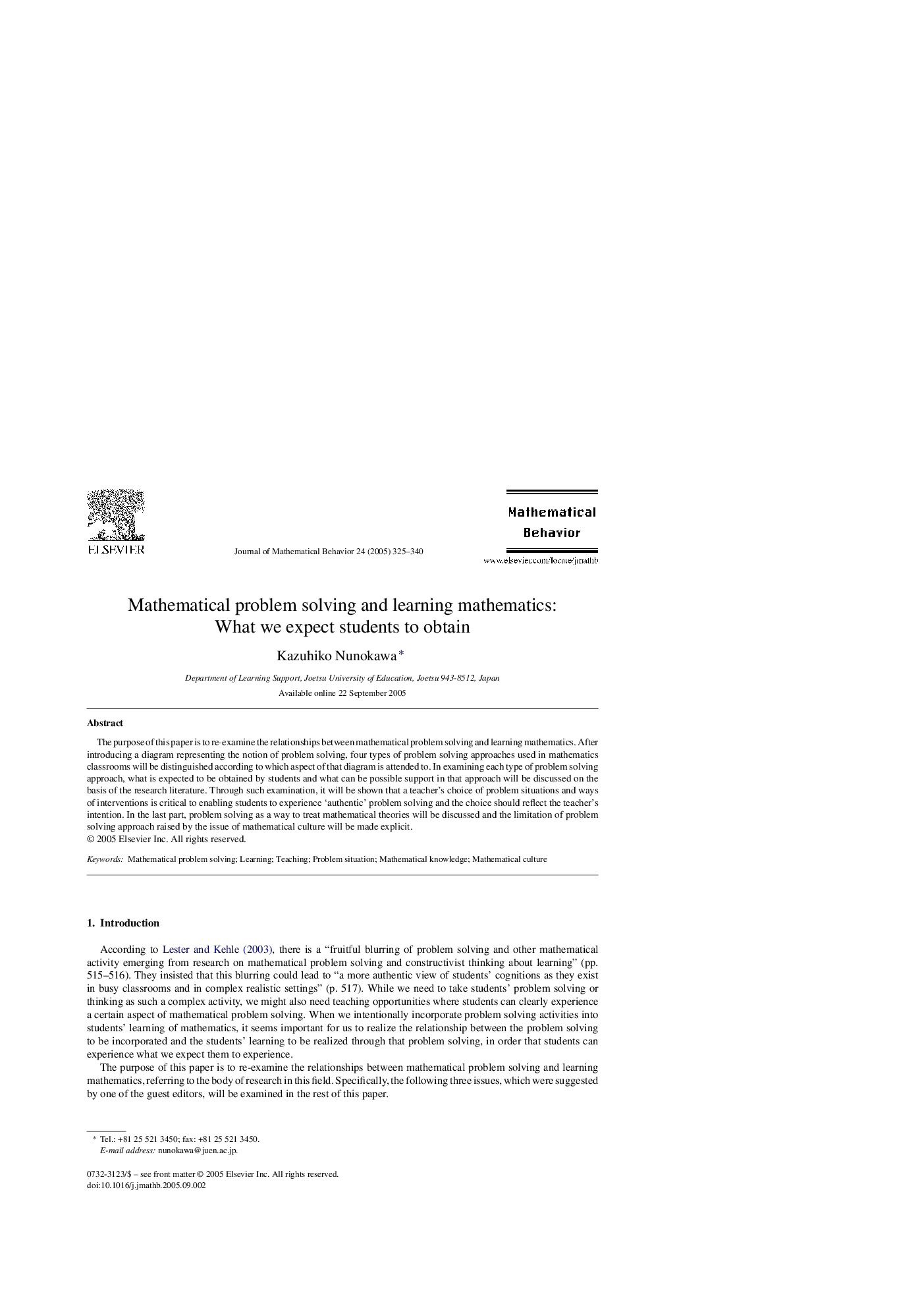| Article ID | Journal | Published Year | Pages | File Type |
|---|---|---|---|---|
| 9649460 | The Journal of Mathematical Behavior | 2005 | 16 Pages |
Abstract
The purpose of this paper is to re-examine the relationships between mathematical problem solving and learning mathematics. After introducing a diagram representing the notion of problem solving, four types of problem solving approaches used in mathematics classrooms will be distinguished according to which aspect of that diagram is attended to. In examining each type of problem solving approach, what is expected to be obtained by students and what can be possible support in that approach will be discussed on the basis of the research literature. Through such examination, it will be shown that a teacher's choice of problem situations and ways of interventions is critical to enabling students to experience 'authentic' problem solving and the choice should reflect the teacher's intention. In the last part, problem solving as a way to treat mathematical theories will be discussed and the limitation of problem solving approach raised by the issue of mathematical culture will be made explicit.
Related Topics
Physical Sciences and Engineering
Mathematics
Applied Mathematics
Authors
Kazuhiko Nunokawa,
